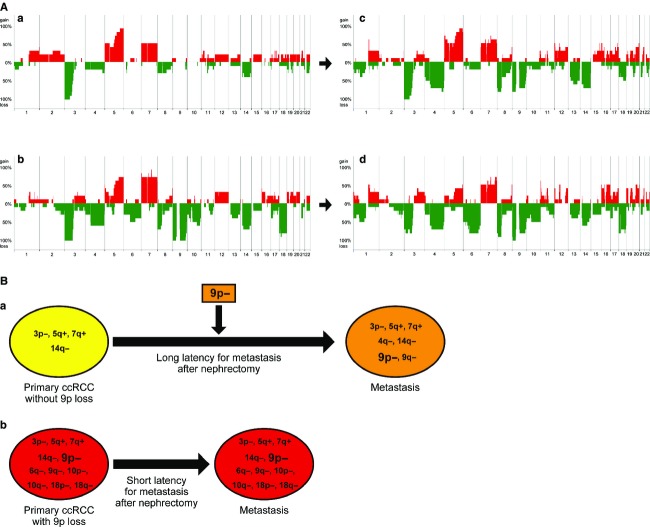Figure 3.
Subclassification of ccRCCs into two groups based on presence or absence of 9p24.1-p13.3 loss. (A) Genome-wide averaged frequencies of genomic imbalances in primary ccRCCs and their corresponding metastases with and without 9p24.1-p13.3 loss. Genome-wide averaged frequencies of genomic imbalances in 10 cases of primary ccRCC without 9p24.1-p13.3 loss (a) and their corresponding metastases (c), as well as 10 cases of primary ccRCC with 9p24.1-p13.3 loss (b) and their corresponding metastases (d), are shown. Oligonucleotide probes are shown in order within each chromosome from chromosomes 1 to 22. The frequencies (%) of gains (positive axis) and losses (negative axis) are shown for each probe. (B) Hypothetical model of metastasis formation in ccRCCs with or without 9p24.1-p13.3 loss. In patients without loss at 9p, it takes a longer time for metastasis to appear after nephrectomy for removal of the primary tumor, and such patients tend to have a relatively good prognosis (a). On the other hand, in patients with loss at 9p accompanied by losses at 6q, 9q, 10p, 10q, 18p, and 18q in the primary tumor, metastasis may occur early, and such patients tend to have a relatively poor prognosis (b).

